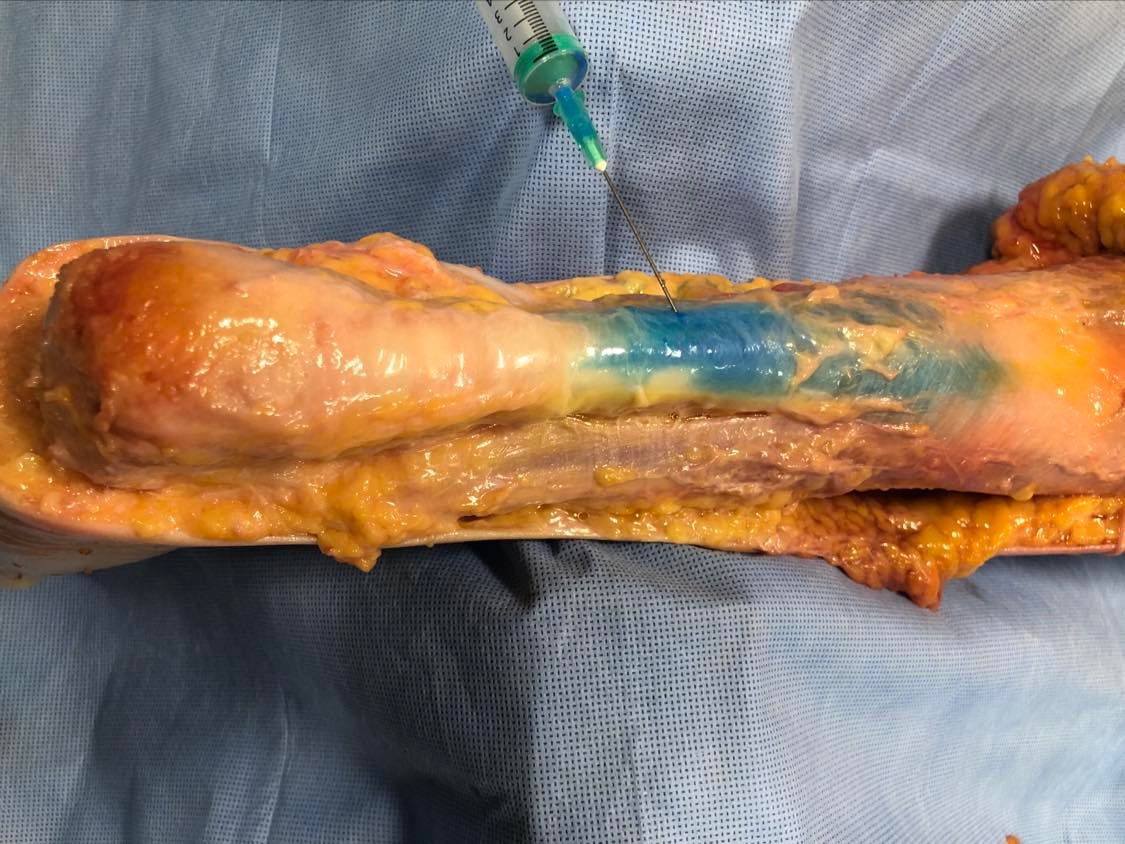Doelstelling:
We have and will continue to perform experiments on cadaver tendon (Achilles and patella) while being subjected to mechanical strecting in a mechanical tensile apparatus or in a fully controlled knee rig where cadaver lower limbs can be subjected to highly controlled kinematics. In these experiments, intratendinous pressure is monitored while injecting different volumes of (different) liquids under varying loading conditions (see picture where methylene blue is injected in Achilles tendon). Results, however, are not always easily interpretable.

The aim of this thesis is to provide a theoretical biomechanical basis for the role of intratendinous pressure in tendinopathy to complement the above described experiments, with the development of a computational biomechanics model of tendon. An essential element in the model is the incorpration of the biphasic nature of tendon to account for the interaction between the solid and fluid phase in the tissue, e.g. by using a poro-elastic material model.